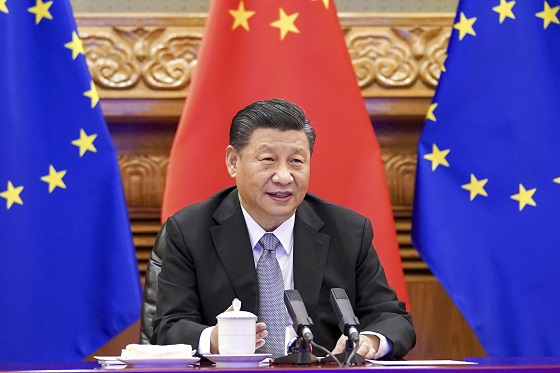Also Interesting
Hollywood’s Influence on World Wrestling Entertainment

The WWE has entertained fans for decades and shows no signs of slowing down. With interesting personalities and over-the-top storylines, the WWE is captivating audiences all over the world. While the product might be scripted, the athletes are very real, and their performances are truly impressive.
Hollywood has significantly influenced the WWE, both in terms of talent and storytelling. In this blog post, we’ll explore how Hollywood has helped shape the WWE into the global phenomenon it is today.
Overview
Since its inception in the early 80s, World Wrestling Entertainment (WWE) has grown from a regional promotion to a global franchise. While WWE Superstars are known for their larger-than-life personas and exaggerated storylines, many of them have gone on to achieve success not just in the ring but also in Hollywood. From television and film roles to cameos and even producing credits, these WWE stars have proven that they can be successful outside of the ring.
The WWE’s Expansion
The growth of the WWE can be attributed to several factors within and outside of the organization itself. Firstly, the organization has made an effort to diversify its roster. While it was once predominantly American, it now features international wrestlers, including Japanese and Latin American wrestlers. This has helped broaden its appeal and draw in viewers from different nations who identify with their country’s representative on screen.
Secondly, WWE has featured numerous celebrities in cameos and guest appearances, further proving the credibility of their product. In addition, many former wrestlers have gone on to have successful careers in Hollywood; Dwayne Johnson, popularly known as “The Rock”, is one great example.
Finally, technological advances have allowed for greater reach and accessibility of WWE content globally. Through streaming services like Hulu, fans around the world can watch their favorite wrestling stars without any restrictions due to geography or time zone differences. In addition, social media platforms like Twitter and Instagram have also provided great opportunities for wrestlers to interact directly with fans and build up hype for upcoming matches or storylines.
Wrestlers That Have Made It Big in the Movies
● Dwayne Johnson
One of the most successful wrestlers to transition into Hollywood is Dwayne Johnson. After a successful career as a professional wrestler in the WWE, Johnson made the leap to acting in 2001 with his starring role in The Scorpion King. Since then, he has become one of the biggest movie stars in the world, with hit films such as Fast & Furious, Jumanji, and Moana. He even won a People’s Choice Award for Favorite Movie Actor and was named one of Time Magazine’s 100 Most Influential People.
● John Cena
Another former WWE superstar that has seen considerable success in Hollywood is John Cena. While Cena has had several roles in television and film since he left the WWE in 2006, it was his 2017 performance – as an ex-Marine-turned-tutor who helped an inner-city youth find basketball glory – that put him on the map.
His stellar performance has won him several awards, including the MTV Movie Award for Comedic Performance of the Year and the MTV Spotlight Award for Best Male Performance. He has also had memorable cameos in films like Blockers and Daddy’s Home 2.
● The Undertaker
The Undertaker is another famous wrestler-turned-actor who has experienced great success outside the ring. After debuting at Survivor Series 1990 as a mysterious biker character, The Undertaker went on to become one of the most popular wrestlers of all time before transitioning into acting after retiring from wrestling in 2020. Since then, he has appeared in films like Suburban Commando and The Longest Yard alongside Adam Sandler and Burt Reynolds. He also recently appeared in Season 2 of Stranger Things alongside Winona Ryder and David Harbour.
● Ronda Rousey
And let’s not forget about Ronda Rousey, who made a noticeable debut when she joined the WWE in 2018. Rousey is no stranger to Hollywood either, having appeared in films such as The Expendables 3 and Furious 7 before joining the wrestling organization. Since then, she has starred in several more movies, including Warner Bros.’s Mile 22 with Mark Wahlberg and STX’s Blindspotting alongside Daveed Diggs.
Influence of These WWE Superstars
The successful transition of former WWE superstars into Hollywood has helped shape the company into what it is today. In addition, these successes have provided a level of credibility and legitimacy to the WWE, enabling it to reach a wider audience than ever before by appealing to movie-goers as well as wrestling fans. These success stories give hope to current wrestlers that there’s life after the WWE should they pursue an acting career. This keeps them motivated and motivates them to give their best performances in the ring.
It also brings a new level of exposure to sports entertainment as a whole. As more former wrestlers go on to have success in Hollywood, it helps bring sports entertainment into the mainstream and encourages more people to watch sports online and follow professional wrestling.
Finally, the success of former WWE superstars in Hollywood has provided a great source of publicity for the company. With major movie stars like Dwayne “The Rock” Johnson and John Cena associated with the WWE, it has become more mainstream and accessible to viewers who may not otherwise be interested in participating in wrestling events. This boosts viewership numbers, leading to increased revenue for the company.
Conclusion
The success of former WWE superstars in Hollywood has had a huge impact on the company, providing legitimacy and credibility to the organization as well as providing a source of publicity. It also serves as an inspiration for wrestlers and UFC fighters who may want to pursue acting once their careers come to an end.
Also Interesting
How to Deposit and Withdraw in CAD at Sol Casino: A Guide for Canadian Players

When choosing an online casino, Canadian players not only look for exciting games and bonuses but also for easy and secure payment methods in Canadian dollars (CAD). Sol Casino understands this need and has created a streamlined system for deposits and withdrawals that suits players across Canada.
This guide walks you through how to fund your account, cash out your winnings, and which methods are most efficient and convenient.
Why Use CAD at Sol Casino?
Sol Casino supports transactions directly in Canadian dollars, which is a huge advantage. This means:
No currency conversion fees
Simplified banking
Faster transactions
Better tracking of your gambling budget
For Canadian players, avoiding unnecessary fees and delays is crucial. Sol Casino ensures you can deposit and withdraw in your local currency without any added complications.
How to Deposit Funds at Sol Casino (Step by Step)
Funding your Sol Casino account is simple. Follow these steps to make a deposit:
1. Log in to your Sol Casino account.
2. Go to the Cashier/Deposit section.
3. Choose your preferred payment method.
4. Enter the amount you wish to deposit (minimum deposit usually starts at $20 CAD).
5. Follow the prompts to complete the transaction.
Most deposits are instant, meaning you can start playing right away.
Popular Deposit Methods for Canadians
Sol Casino offers a variety of trusted options tailored for Canadian players:
Interac e-Transfer: A go-to choice in Canada, easy to use and highly secure.
MuchBetter: A modern e-wallet app offering fast, private transfers.
ecoPayz: Another reliable e-wallet widely used in Canada.
Visa/Mastercard: Traditional and familiar for most users.
Cryptocurrencies: Includes Bitcoin, Ethereum, and more for added privacy.
Each method is secure and designed to fit your lifestyle and preferences.
How to Withdraw Winnings in CAD
Cashing out your winnings is just as easy. Here’s how to request a withdrawal:
1. Go to your account dashboard and select Withdraw.
2. Choose the same method used for depositing (if possible).
3. Enter the amount you want to withdraw.
4. Submit your request and wait for confirmation.
Before processing your first withdrawal, Sol Casino may ask for ID verification to comply with KYC (Know Your Customer) rules. This is standard for any legitimate casino and helps protect your account from fraud.
Withdrawal Processing Time
Sol Casino processes withdrawal requests quickly. Here’s a general idea of how long it may take:
E-wallets (MuchBetter, ecoPayz): 0–24 hours
Cryptocurrency: 1–12 hours (depending on network speed)
Interac: 1–2 business days
Cards (Visa/Mastercard): Up to 3–5 business days
Once your identity is verified, future withdrawals are often processed faster.
Tips for Smooth Transactions
Verify your account early to avoid delays during your first withdrawal.
Use the same method for deposit and withdrawal whenever possible.
Set responsible limits to manage your gambling activity.
Watch for promotions offering cashback or deposit bonuses for specific payment methods.
Sol Casino also sends notifications and email confirmations for each transaction, adding transparency to the process.
Customer Support for Payment Issues
If you run into any trouble while depositing or withdrawing, Sol Casino has a 24/7 support team ready to help. You can use:
Live chat for immediate assistance
Email support for more detailed inquiries
FAQ section with answers to common questions about payments
All services are available in English and French, making support accessible to all Canadian users.
Conclusion: Fast, Flexible, and Canadian-Friendly Banking
Sol Casino has built a payment system that respects Canadian needs. With support for CAD, a variety of local methods like Interac and MuchBetter, and fast withdrawals, it provides a hassle-free banking experience. Whether you’re playing for fun or aiming for big wins, Sol Casino ensures your money is handled safely, securely, and efficiently.
Also Interesting
Actuators in Industrial Automation: How They Improve Efficiency

In the quest for enhanced productivity and reduced operational costs, many industries face challenges in optimizing their automation systems. Integrating advanced technologies, such as actuators, alleviates these issues by automating processes and minimizing manual intervention. Leveraging the capabilities of an actuator allows businesses to streamline operations and achieve higher efficiency.
Industrial automation continues to evolve, with a focus on precision and reliability. As of 2025, advancements in automation technologies are projected to increase productivity by up to 30% in various sectors, according to the International Federation of Robotics report. This growth is attributed to the strategic use of components like the actuator, pivotal in enhancing operational efficiency.
Actuators: What are They?
Actuators are mechanical devices that convert energy into motion and enable precise control over various industrial processes. They are categorized into:
Electric
Hydraulic
Linear
Each type offers unique advantages (e.g., precision, force, speed) for different applications. Understanding what actuators are and how they work is crucial for application in industrial settings.
The question “What are actuators?” is often followed by “What is the work of an actuator?” These devices perform tasks that require movement or force (e.g., opening valves, moving parts in machinery, or adjusting positions in assembly lines). They are integral to systems requiring precise control, making them a cornerstone of modern automation.
The Role of Actuators in Industrial Automation
Actuators are the backbone of industrial automation, enabling precise control and integration across systems. Their ability to convert energy into motion makes them indispensable for optimizing processes, reducing costs, and improving productivity.
In control systems, they work with sensors to enable real-time adjustments. For example, in food processing plants, electric motors adjust conveyor speeds, ensuring consistent packaging and reducing waste. It minimizes downtime and saves businesses time and money.
In robotics, devices like the actuator arm deliver high precision. In automotive assembly lines, linear drives allow robotic arms to weld or paint with millimeter accuracy, reducing rework and enhancing product quality.
Beyond robotics, these motors streamline machinery operations. In the oil and gas industry, hydraulic motors control pipeline valves, eliminating manual intervention in hazardous environments and improving safety.
How Actuators Improve Operational Efficiency
Here is how actuators enhance industrial operation:
They offer precise control over movements, essential in applications requiring high accuracy (e.g., manufacturing, robotics). It reduces errors and improves product quality. For example, in CNC machining, linear actuators ensure cuts are made with exactness, resulting in parts that meet precise specifications.
They speed up production cycles, allowing for higher output in less time. It is beneficial in assembly lines where actuator assembly and actuator adapter components are used to streamline processes. In automotive manufacturing, they can quickly position and secure parts, reducing assembly time.
They minimize the need for human intervention, reducing the risk of errors and accidents. It improves safety and increases productivity by allowing workers to focus on more complex tasks.
In environments where repetitive tasks are common, motors automate these processes, freeing up personnel for strategic roles.
Applications of Actuators in Various Industries
Actuators are used across different industries to enhance efficiency and productivity.
Manufacturing. Linear drives are used in machinery to ensure precise movements and consistent product quality. They are integral in assembly lines, where they automate tasks such as positioning and lifting components. For instance, in electronics manufacturing, actuators precisely place components on circuit boards, ensuring each product meets quality standards.
Oil and gas. Here, hydraulic motors are used for valve control due to their high force capabilities, necessary for handling heavy loads.
Food processing. In this niche, electric motors are preferred for their cleanliness and low maintenance, ensuring production lines remain hygienic and efficient. They are used in machinery requiring precise control (e.g., filling and packaging systems).
How to Choose the Right Industrial Actuator
Evaluate several factors for optimal compatibility with your applications:
Determine whether your application demands linear, rotary, or oscillatory motion. For example, linear motors are ideal for tasks requiring straight-line movement, such as positioning components in manufacturing lines.
Assess the load capacity and force requirements of your application. Heavy-duty applications, like those in the oil and gas sector, often require hydraulic actuators due to their high force capabilities.
Evaluate the operating environment, considering factors such as temperature, humidity, dust, and corrosive conditions. Ensure the actuator’s materials and design are suitable for these conditions by checking IP ratings, temperature limits, and corrosion resistance.
Ensure the motor is compatible with existing control systems. It includes considering manual, mechanical, electrical, or computer-based control options to ensure integration.
Consider safety factors (e.g., emergency stop mechanisms and fail-safe designs), especially in critical applications like vehicle automation.
Actuators are essential in industrial automation, delivering precision, speed, and efficiency to optimize operations across sectors. Integrating the right motors will allow businesses to reduce costs, enhance productivity, and maintain a competitive edge in an automated landscape.
-

 2025 Federal Election2 days ago
2025 Federal Election2 days agoBREAKING: THE FEDERAL BRIEF THAT SHOULD SINK CARNEY
-

 Media2 days ago
Media2 days agoCBC retracts false claims about residential schools after accusing Rebel News of ‘misinformation’
-

 2025 Federal Election2 days ago
2025 Federal Election2 days agoCHINESE ELECTION THREAT WARNING: Conservative Candidate Joe Tay Paused Public Campaign
-

 Business2 days ago
Business2 days ago‘Great Reset’ champion Klaus Schwab resigns from WEF
-

 Bjorn Lomborg2 days ago
Bjorn Lomborg2 days agoNet zero’s cost-benefit ratio is CRAZY high
-

 Business23 hours ago
Business23 hours agoTrump: China’s tariffs to “come down substantially” after negotiations with Xi
-

 International2 days ago
International2 days agoPope Francis’ funeral to take place Saturday
-

 Business2 days ago
Business2 days agoHudson’s Bay Bid Raises Red Flags Over Foreign Influence





